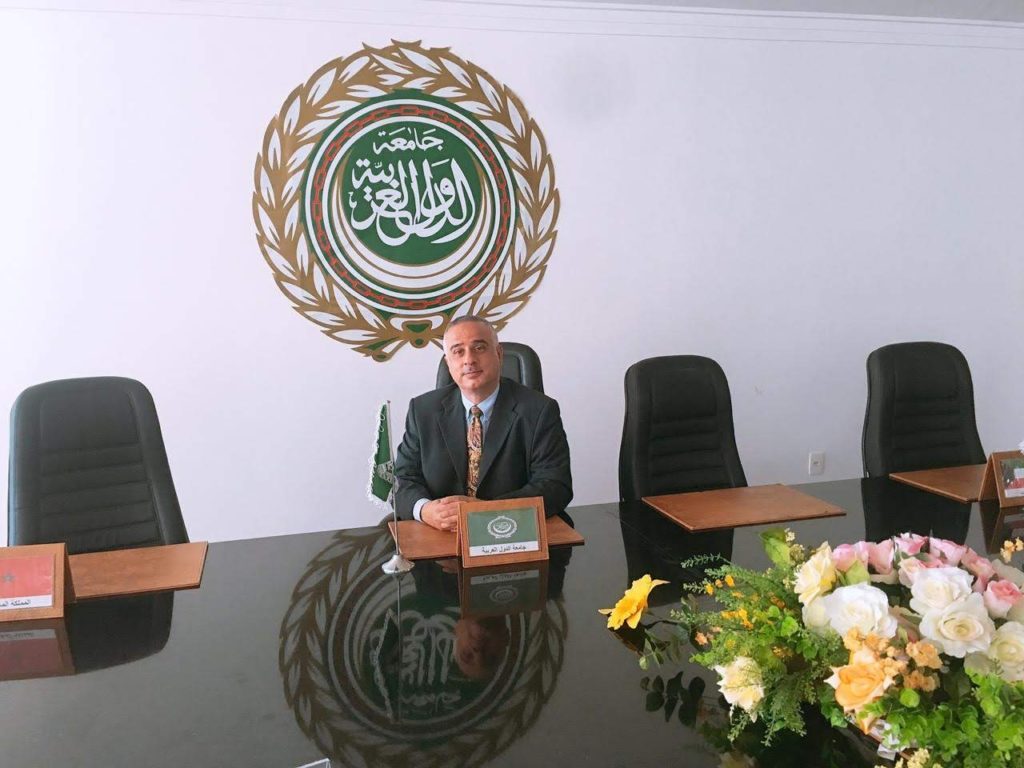By Qais Shqair*
In a book in English authored by Dr. Tahia Abdel-Aziz Ismail, a professor of linguistics, she reveals, after ten years of studying documents, manuscripts, and dictionaries, with full adherence to a solid scientific method of studies, that Arabic is the origin of all languages; Latin, and its sub-languages.
The book is annexed with a table of common expressions used in Arabic and Latin, English, Anglo-Saxon, French, ancient European languages, Greek, Italian, and Sanskrit.
By the said method of study, the book concludes the Arabic language intersects with different languages, with a huge number of common vocabularies despite the continents and oceans that separate peoples away.
The author came out with a definitive conclusion that the Arabic language is the origin and the main source of other languages which served as channels and tributaries to that source of origin. The author stresses what follows:
— The vastness and richness of the Arabic language, in contrast with the narrowness and relative poverty of other languages. The Latin language consists of only 700 linguistic roots; Saxon a host of 2,000 roots, while Arabic hosts 16,000 linguistic roots, in addition to an open capacity of word forming activation, derivation, and composition.
In English, for instance, the word ‘tall’ means high. The similarity between English and Arabic words is clear in pronunciation: ‘Taweel,’ but we find out that the Arabic word comes out with unlimited derivatives and structures with various meanings such as: (Long, distance, height, duration lasting, oblong, etc.), while the English word ‘tall’ comes short of extra meanings.
The same applies to the word ‘good’ in English and Arabic, both of which are similar in pronunciation; ‘jayyed’ in Arabic. The word ‘good’ in Arabic stands for being good, referring at the same time to: Quality, proficiency, generosity, horses, and many others.
Moreover, in Arabic, a single word may give multiple meanings by simply resorting to morphology with its simplest form. For example, ‘qatel’ means a murderer, and ‘maqtoul’ means the opposite. That is also the case when the word comes in a context. The word: ‘Sa’el’ may stand for: Liquid, poor, someone who asks a question, and so on and so forth.
Compared to English, Arabic has 25 times the number of vocabularies, with a total that exceeds 12 million, whereas English vocabulary stands at 600,000.
The Arabic letter, the phoneme, itself has got symbolism, significance, and a separate meaning. The letter ح ‘haa,’ for example, symbolizes intensity and heat, as in: ‘Humma’ (‘fever’), ‘harara’ (‘heat’), ‘hob’ (‘love’), ‘heqd’ (‘hatred’), and others. While the letter ‘khaa’ خ stands for everything that is hateful, bad, and repulsive, as in the words: ‘Khawf’ (‘fear’), ‘khezei’ (‘disgrace and shame’), and ‘kheyana’ (‘betrayal’).
Furthermore, we can write very short sentences in Arabic, such as “I will not go,” with only two words: ‘Lan ath-hab,’ much lesser than in English. The examples are many.
By tracing the history of Arabic in terms of grammar, morphology, word formation, and structure, we realize the methods of composition and derivation are fixed and did not change over thousands of years.
In fact, the language horizon was ever-expanding in terms of the outcome of vocabulary as the occasions were diverse over time. Those formats were preserved by entity, structure, and rules and were not subject to dissolution or distortion. That was not the case with other languages, which were submitted to extinction, distortion, addition, deletion, merger, abbreviation, and change of rules over time.
— In the old German language, for example, there has been a standard language specific to the north and another to the south. There were different rules in the two languages, undergone overlapping, merging, abbreviation, distortion, and change.
That was the case with Latin and its derivatives, Greek and Anglo-Saxon. That, in specific, is the reason behind choosing Arabic as the language of the Holy Qur’an. It served as a preserving container of the holy words of the “Almighty God.”
— Arabic is a vastly rich language with open-ended synonyms. There are tens of names for the lion; ‘al-layth, al-ghanfar, al-sabaa, al-ribal, al-hazbar, al-dhargham, al-dhygham, al-ward, al-qasoura,’ and many others. Each of them reflects an attribute of the lion. Passion, in the same token, has 17 synonyms, each of which reflects a degree of passion; the most of all is: ‘Mawaddeh’ which indicates an ever-lasting affection.
It is totally understood that limited languages borrow from a comprehensive one. Thus, Latin, Saxon, European, and Greek have taken much from Arabic, for that, Arabic is the first origin of all languages, with its grammar, activations, and word formation, revealed to Adam — peace be upon him — as the Holy Qur’an says: “And He taught Adam all the names.”
This is the Arabic language, the mother of all languages. It deserves not only much honor but the utmost care and attention.
*Ambassador Qais Shqair is the head of the mission of the Arab League in Brazil




